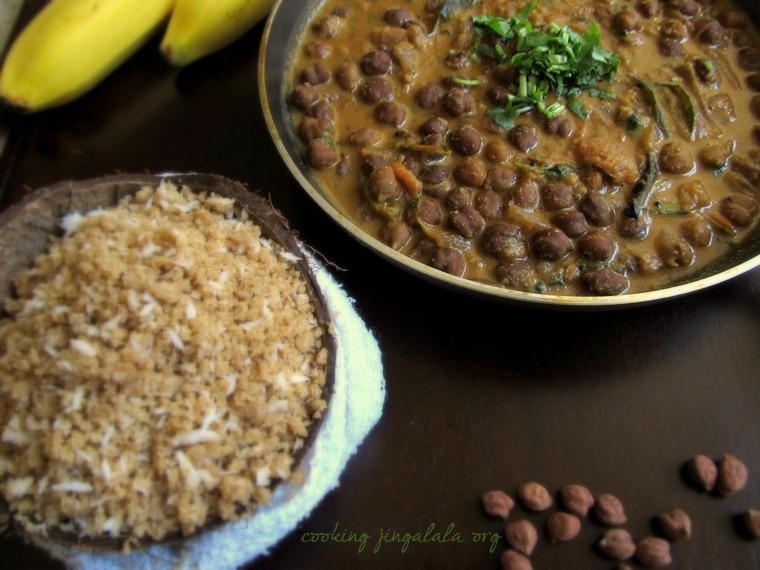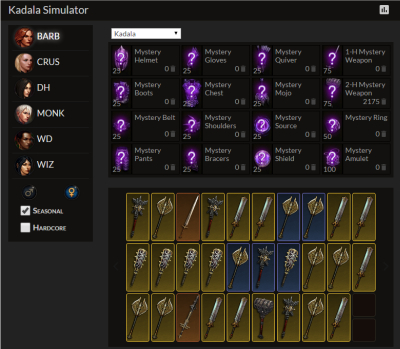Kadala Gambling Simulator Saves the Trouble of Playing. Works identically to the game, for better or worse.
- Nevertheless, I hope until this reviews about it Kadala Gambling Simulator And Lost Rent Money Gambling will end up being useful.
- D3Planner Data Toggle navigation. 2.6.10.71254 (Live) 2.6.10.71042 (PTR) 2.6.10.70985.
Legendaries might be more common in Diablo 3 than in World of Warcraft, but the endgame goal is basically the same between the two games: get more, better loot. WoW starts to differ with “get prettier loot” while Diablo 3 just laughs and says, “You wish you had my transmog system.” But while WoW tends to funnel players into the One True Progression Path to get the best loot, Diablo 3 keeps it open with a handful of ways to get your legendary groove on.
Players are going to figure out the “better” solution for anything. There are two major methods that Diablo 3 players will use to chase a specific legendary item, and now we’re going to dive into the math behind which way is better, depending on what you’re looking for.
Diablo’s theorycrafting spreadsheets explained
Spreadsheets come with the theorycrafting territory, especially when it comes to gear decisions. Even though Diablo 3 defies traditional databasing like Wowhead because all the gear has random stat rolls, you can still depend on spreadsheets to help you understand math like drop rates and probability chances.
Browsing Diablo‘s class subreddits means you’ll see this spreadsheet linked a lot though I’ve found this alternate spreadsheet is a little more helpful because it compares not just drop rates or Blood Shard costs, but also approximate Death’s Breath costs. As it was built using the first spreadsheet, it also fixes some of the new item choices. For example, the Thorns of the Invoker set was a multi-class set previously, but in patch 2.3 it became Crusader-only. The latter spreadsheet fixes this tiny patch difference among others, which in turn slightly affects the rate numbers.
Kadala Simulator Wiki
The easiest value to understand is the legendary’s regular drop rate, which is the chance that an item will be this particular legendary should the game roll the item as a legendary. We get this chance by dividing the specific legendary item weight by the sum of all legendary item weights of that type. Item types can be large categories of items that many classes can use, like shoulders, or they can contain class-specific item types, like voodoo masks (Witch Doctors only). The weight of an item is essentially its rarity: lower weights mean a rarer item. You’ll notice that you’ll see more Gidbinns and Last Rebirths as ceremonial knives, for example, than that one Starmetal Kukri you’ve seen all season. If you look in the “Raw Data” tab, you’ll see that the Gidbinn has a weight of 100, while the Starmetal Kukri is the rarest ceremonial knife out there with a weight of only 25.
So, let’s take a ceremonial knife, for example. I want a Dagger of Darts (DoD) to complement my Carnevil build, so if a legendary ceremonial knife is going to drop, what’s the chance it’ll be a DoD? That’s a weight of 50 divided by a total ceremonial knife weight of 575, which equals 0.0869 or a 8.69% chance.
Now, Kadala’s wares take the same formula, but she has a bigger selection to choose from. A ceremonial knife also fits into the 1H weapon category, so when we gamble with Kadala we have to take into account all the other one-handed weapons that Witch Doctors can use. The total weight becomes 3325:
- 575 = ceremonial knives
- 550 = 1H axes
- 350 = daggers
- 650 = 1H maces
- 200 = spears
- 1000 = 1H swords
So the chance of getting a Dagger of Darts (weight = 50) from a selection of all the 1H weapons a Witch Doctor can use is 50/3325 or 1.50%.
For more exercise, let’s say I’m looking for a Carnevil voodoo mask. Since voodoo masks are a class-specific item like ceremonial knives, the regular drop rate is similar — 50/550 or 9.09%. But voodoo masks are a type of helm, which is an item type category that’s way slimmer than our 1H weapon example. The chance of getting a legendary item that’s a Carnevil via Kadala is about 3.70%.
Calculating item costs
Now that we’ve got chance basics down, we can figure out our average cost. Of course, the big caveat is that this is the average cost, which means this isn’t a fixed number of Blood Shards or Death’s Breath you’ll need to spend in order to guarantee you the item. You could be lucky and get it within your first few gambles, or you might not see that one legendary you want through a single method until you’re almost done with your season.
Kadala Simulator 2
The formula goes like this: 100 / Kadala_Drop_Chance * Kadala’s_Cost * 10.
Because our drop chances are in percents, they have that “out of 100” factor to them, so we’re going to flip the fraction to figure out how many tries out of 100 that it’s going to take us on average to get this particular legendary. Of course, every time you roll with Kadala, she has a Blood Shard cost, so we’re going to multiply how many times out of 100 it’s going to take us by Kadala’s cost for that item category.

The drop chances we were calculating before were assuming that the item is legendary to be begin with. Kadala doesn’t guarantee you a legendary; she might give you a backpack full of both literal and metaphorical blues for all she cares. She has a flat 10% chance to give you a legendary to start with, so that’s the extra multiply by 10 that we’ve tacked on.
So, if I’m trying for a Dagger of Darts, I’m going to have to spend on average a little less than 50,000 Blood Shards. (The math: 100 / 0.0150 Kadala chance * 75 Blood Shards * 10 = 49,875 Blood Shards.) To put it in perspective, that’s about 57 times my hardcore seasonal’s current Blood Shard cap. But, come on, that’s nothing compared to Starmetal Kukri’s average cost of 99,750 shards!
Hey, Carnevil had better odds at Kadala — twice the Dagger odds! Even better, the Blood Shard cost for a helm is only 25, a third of the 1H weapon cost. So on average, you end up spending only about 6,750 shards to get a Carnevil voodoo mask.
Kanai, please get a better weapon chance
The other main method of getting a specific legendary was introduced in patch 2.3 with Kanai’s Cube. One of the recipes, Hope of Cain, will take a yellow equippable level 70 item and turn it into a random legendary of the same item type. This item type is specific rather than broad like Kadala’s, so if you put a yellow voodoo mask in, you’re getting a legendary voodoo mask out. This makes it very nice for weapons because instead of rolling against the entire set of legendaries that count as a 1H weapon, you’d just be rolling among 1H swords, etc.
The only downside is that it costs 25 Death’s Breath every time you roll with Kanai. The average cost of Death’s Breath uses the same kind of math as the average Blood Shards did, but because we’re guaranteeing a legendary, we don’t need that legendary-roll chance at the end. The formula goes: 100 / Drop_chance * 25. The 25 is that fixed Death’s Breath cost we have for the Cube.
Carnevil (9.09%) turns into an average of 275 Death’s Breath spent, while a Dagger of Darts takes only about half a try more at an average of 288 Death’s Breath. Get into something a little more limited, like a SuWong Diviner in the Witch Doctor-available 2H staff pool, and you only spend about 163 Death’s Breath on average.
Conclusions: Legendaries from Kadala versus Kanai
Kadala is good for armor rolls, specifically generic armor rolls. Shoulders, for example, see under or around 2,000 Blood Shards on average for all six classes. Class-specific armor that fits into another slot — helms for Witch Doctors, Wizards, and Monks, for example — is a little bit riskier but it’s still a way better deal than gambling with Kadala for a weapon.
Specific items, like weapons or class items, are best rolled with Kanai, because you’re rolling within either a very specific item type or a limited pool within a generic type. For example, there are seven 2H maces, but Witch Doctors can only use five of them. The major threat to rolling with Kanai is the overall rarity of that specific legendary in its item category. This means that the Witch Doctor doesn’t actually have a 1-in-5 chance to roll the Furnace: the rarity weight of the Furnace means that you’re still spending 375 Death’s Breath on average.
Rings and amulets are not great with either method. Because there aren’t many class-specific jewelry pieces to slice up the ring and amulet pools, they have a high cost with Kanai’s. Kadala, too, isn’t generous with jewelry, as a ring costs 50 Blood Shards and amulets cost a whopping 100 each. Truly rare items like that Furnace you’re after are also unfortunately high-cost with either method.
Please consider supporting our Patreon!
Introduction
- In Hinduism
- Languages
Introduction:

Kadala means something in Hinduism, Sanskrit, Buddhism, Pali, Marathi. If you want to know the exact meaning, history, etymology or English translation of this term then check out the descriptions on this page. Add your comment or reference to a book if you want to contribute to this summary article.
In Hinduism

Ayurveda (science of life)
Source: Shodhganga: Dietetics and culinary art in ancient and medieval IndiaKadala Simulator Download
Kadala (कदल) refers to the “plantain” and is mentioned in a list of potential causes for indigestion in the 17th century Bhojanakutūhala (dravyaguṇāguṇa-kathana), and is commonly found in literature dealing with the topics of dietetics and culinary art, also known as Pākaśāstra or Pākakalā.—A complete section in Bhojanakutūhala is devoted for the description of agents that cause indigestion [viz., kadala (plantain)]. These agents consumed on a large scale can cause indigestion for certain people. The remedies [viz., ghṛta (ghee)] for these types of indigestions are also explained therewith.
Kadala Simulator Game
Kadala (plantain) is also mentioned as a remedy for indigestion caused by panasa (jackfruit).
Āyurveda (आयुर्वेद, ayurveda) is a branch of Indian science dealing with medicine, herbalism, taxology, anatomy, surgery, alchemy and related topics. Traditional practice of Āyurveda in ancient India dates back to at least the first millenium BC. Literature is commonly written in Sanskrit using various poetic metres.

